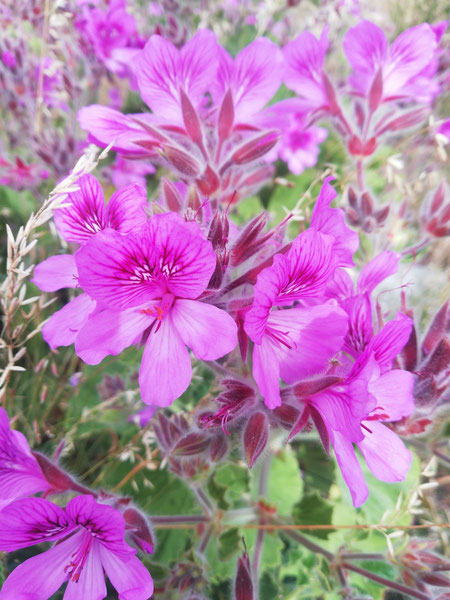Pelargonium cucullatum
 Image: Paul Hoekman
Image: Paul Hoekman
Description
Pelargonium cucullatum is the parent of many modern pelargonium hybrids. It is a fast growing, tough shrub tolerant to coastal conditions, and is also excellent for growing in containers on a sunny patio, informal borders and rockeries.Pelargoniums are easily grown and fairly adaptable. They can be propagated vegetatively and from seed. Pelargonium cucullatum requires full sun and little attention once it is established.
Birds, butterflies, flies and moths all visit this flower.
Click here to read how to propagate from cuttings: https://www.wikihow.com/Propagate-Geraniums-from-Cuttings
Propagation instructions - cuttings
Cuttings may be taken in autumn or summer from a parent plant that is strong and healthy. The stem should be fairly firm but not woody. Most of the leaves and stipules should be removed, leaving only a few leaves intact on the top. If the leaves are large they may be trimmed to reduce moisture loss. The cuttings should be left to dry for a few hours before placing into the soil. The cuttings should be rooted in trays filled with a well-drained medium such as coarse river sand, or planted directly into the ground. The basal ends of the cutting should be dipped in a rooting hormone, e.g. Serradix, to improve the rate of rooting, then inserted in a prepared hole made by a dibber or a nail to avoid damaging the ends.
The cuttings should be kept moist, but as this is a fairly drought resistant plant you should avoid over-watering or the cuttings might damp off. Four to eight weeks later, after root formation, cuttings should be fed with a seaweed extract product. One or two weeks after this, the cuttings may be potted. Plants produced this way will flower in approximately 3-6 months.
Propagation instructions - seeds
Vegetative propagation by means of stem cuttings is the method most widely used but pelargoniums can also be grown from seed. The seed of pelargoniums is quite interesting in that, attached to the elliptically shaped seed, is a feathered tail-like structure that is coiled in a spiral. The tail allows the seed to drill and secure itself in the soil if twisted around by the wind or affected by the movement of the animals.
Sow the seed in a light, well-drained soil which contains coarse sand. Firm down gently to level the medium. Broadcast the seeds evenly, covering them with a layer of clean white sand. The depth of sowing is usually 1.5 times the size of the seed. Water thoroughly but gently and provide light shade. Germination usually takes place within 10 -14 days. Pelargoniums grown from seed are generally more vigorous than those made of cuttings; however, they take longer to flower.
Sources and references
Scientific name
Pelargonium cucullatum
Common name(s)
Hooded-leaf pelargonium
Features
- Attracts butterflies
- Easy to grow
- Fast-growing
- Fragrant
- Good potplant
- It provides medicinal value
- This is a bird-friendly species
- This will attract honey bees
